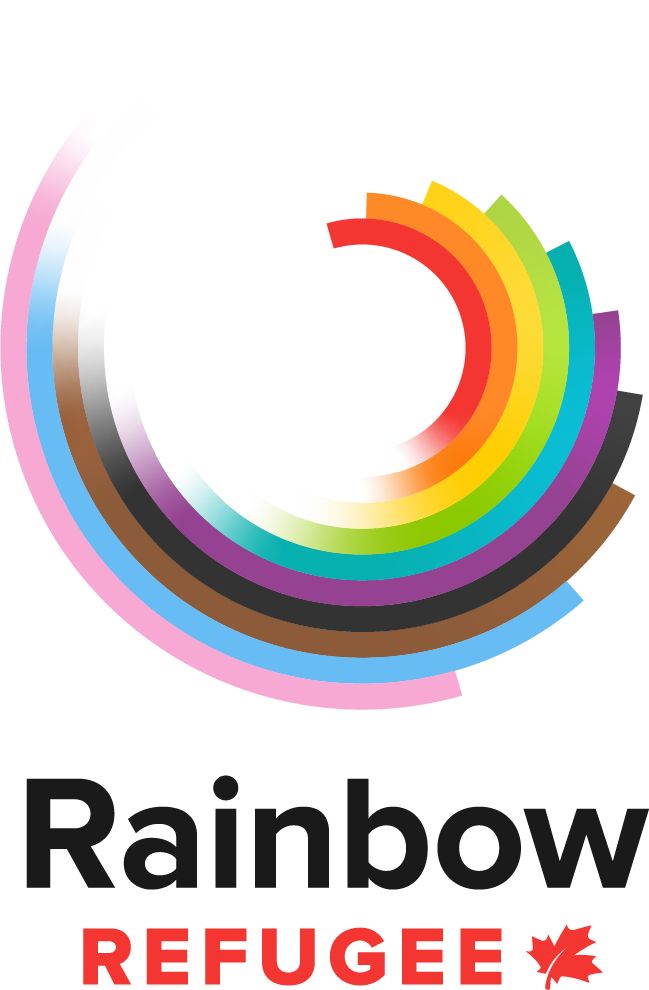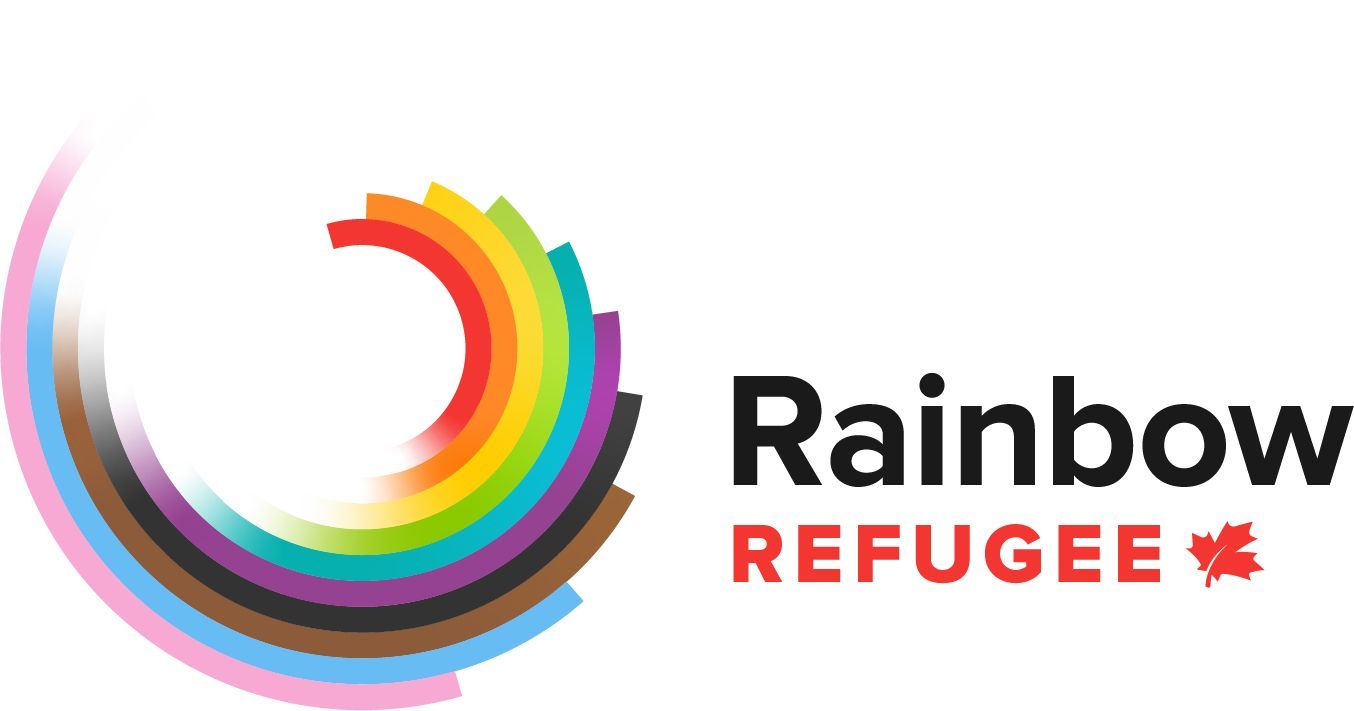LGBTQI+ Refugees in Canada
Rainbow Refugee’s Inland Program supports people already in British Columbia, Canada who have fled persecution in their country of origin based on their sexual orientation, gender identity, gender expression, or HIV status.
We provide these asylum seekers and refugee claimants access to services in Canada while waiting for a decision regarding their refugee claim. This includes helping them understand, interpret, and navigate legal and institutional frameworks.
Our Inland Program focuses on an individual’s right to claim asylum, protection and eligibility, providing essential services, access to justice, and obtaining legal identity documentation.
Making a Refugee Claim: Basic Steps
Getting a Lawyer
Its important that you work with a lawyer you are comfortable with and you feel respected in regard to your sexual orientation, gender identity or expression, sex characteristics (SOGIESC) or HIV status. You are also required to be fully honest with your lawyer about your situation. You can ask if the lawyer has represented lesbian, gay, bisexual, transgender, queer, intersex, asexual (LGBTQIA) or HIV+ clients before. Rainbow Refugee can provide referrals.
Forms
The forms for making an inland refugee claim can be found here. The Basis of Claim (BOC) form requires you to describe why you need to make a refugee claim. If possible, work with a lawyer to complete your BOC form.
Preparing for your hearing
While you wait for your hearing, you will need to gather evidence that supports:
- Your identity—a national ID as well as your identity related to your sexual orientation, gender identity or gender expression (SOGIE)
- Evidence that you would face SOGIE persecution if you returned to your country of origin
These documents should be translated into English or French and presented to the Immigration and Refugee Board, Refugee Protection Division 10 days before your hearing.
If you need additional support, a hearing preparation guide is available in different languages
here as well as a
Refugee Claim Toolkit from Capital Rainbow.
The Hearing
If you are represented by a lawyer, they will receive a letter stating the date of your hearing, help you prepare, and represent you. You can request an interpreter if needed. During the hearing you will be asked questions related to your identity, your fears of returning to your place of origin, and whether there are other places in your country where you could be safe. These questions and your answers will be recorded. At the end of the hearing, a decision will be made in-person or you will receive the decision later in the mail.
After the Hearing
If you receive a positive decision, you can apply for Permanent Residency once you have a written copy. If you aren’t approved, you may have other options, including an appeal.
If You Are Already in Canada
If someone who is already in Canada as a visitor, a student or a worker and is afraid to go back to their country, the person can check if they are eligible to make a refugee claim and start their claim online through the Canadian Refugee Protection Portal.
It is very important to connect with an organization that assists asylum seekers and refugee claimants first. They will assist you in applying for legal aid and getting a lawyer. It is best to do this before you start your refugee claim application through the Canadian Refugee Protection Portal.
Contacting Legal Aid
It is important before you contact legal aid to review the basis of claim to explain why you are seeking protection in Canada and review the preparation guide, available in several languages here. Legal aid will complete an assessment and determine whether you are eligible to benefit from their support. In the case that your legal aid is not approved, there are alternative resources.
Submitting your Claim Online
Once you connect with a lawyer to assist you in completing your refugee claim forms and submitting your refugee claim application online, the documents will be reviewed. If the documents are complete, you will receive an acknowledgement letter. This letter will mention that you are now covered under Interim Federal Health Program (IFHP) insurance, which gives you the right to access healthcare. If you are asked to complete a medical examination, please complete it as soon as possible. This will be covered under IFHP.
Eligibility Interview with IRCC
You may be asked to have an eligibility interview at an Immigration, Refugees and Citizenship, Canada (IRCC) office and give them the results of your medical examination. The officer will keep all your identity documents and provide a copy for you. At the interview they ask questions to see if you are eligible to make a claim. However, the interview does not determine if you are a refugee, only that you are eligible to start a claim. It is very important that you tell the officer the reason you are afraid to return. IRCC officers are expected to be respectful and you are legally protected against discrimination as an LGBTQI+ or HIV+ person. There is no time estimate to when you will have a hearing with the Refugee Protection Division (RPD) of the Immigration and Refugee Board of Canada. It is important that you update IRCC and the RPD once you change your address or contact information and gather and submit all your evidence before your hearing.
If You Are Yet to Arrive in Canada
Detention
Canadian Border Services Agency officers can detain asylum seekers if they do not have adequate identity documents or the officer has security concerns.
If you are detained, you will meet with a lawyer, called a duty counsel, within 48 hours. It is important to tell the duty counsel that you need to make a refugee claim and that your claim is related to SOGIE persecution.
Arriving at a Land Border
You cannot come to the border between Canada and the United States and make a refugee claim. This is because the countries have signed an agreement called the Safe Third Country Agreement. If you try to do this you will be ineligible. You do have the right to ask to do the Pre Removal Risk Assessment.
There are a few exceptions to the Safe Third Country Agreement:
- If you have a close family member in Canada. You must be able to prove they are a relative.
- If you are an unaccompanied minor (under 18).





